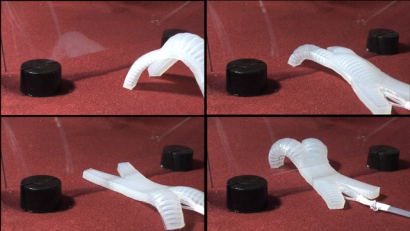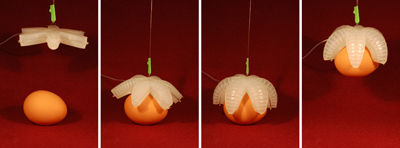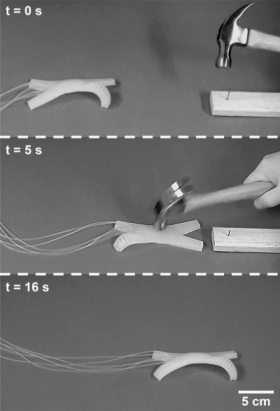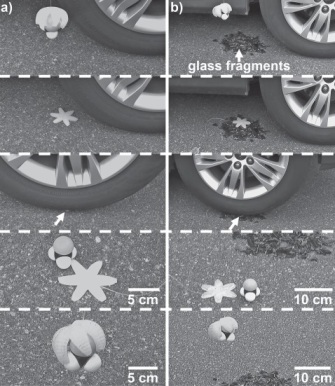This is a work of historical fiction. Liberties have been taken with events and timeline.
Harold Kroto and Robert Curl gazed into the Sussex night sky, imagining molecules floating in the space dust.
“If only we could make some of what’s out there down here,” Kroto sighed.
“I may know someone who can help,” Curl said.
The next day, Curl called his friend Richard Smalley, an expert in experimental physical chemistry. If there was anyone who could make the unsaturated carbon chains Kroto and Curl so desperately desired, it was Smalley.
“Smalley, my old friend. Harold and I have come upon an interesting topic and would like you involved. We’d like to synthesize some of the more unstable spacely carbons for direct characterization here on Earth.”
“You want me to create outer space,” Smalley said, “in my lab.”
“Precisely,” said Curl. “I’ll be back in the US soon. I’d like it if we could sit down and chat.”
“Absolutely,” said Smalley as he hung up the phone.
Weeks went by before Curl returned to his academic home, Rice University, but time had not eroded his interest. Directly after landing, eyes heavy with jet lag, Curl drove to the university.
He arrived in the chemistry building to find Smalley’s door open, lights on, but Smalley nowhere in sight. He waited for half an hour without the return of his friend before he gave up. His head hurt. His back hurt. He was tired. Maybe it would be best to return home. He could try again tomorrow.
I’ll just take a quick look in the lab, Curl told himself.
The whirring of pumps grew louder as Curl approached Smalley’s lab. A red light blinked over the door, warning unsuspecting visitors to dawn a pair of yellow-tinted glasses, lest they be blinded from a beam gone awry. Taking a pair of glasses from the bin at the door, Curl entered the lab.
Thick metal tubes connecting thick metal boxes took up the majority of the room. Lenses, bolts, and wires littered what little counter space was left. Three people in lab coats dotted with curious brown rimmed holes were gathered around one of the boxes.
“Try the 1064. That should arouse some excitement.” Smalley said. He turned from the group and saw Curl waiting in the door.
“Robert,” he said. “Good news and bad.” He slung his arm around Curl and led him out, away from the flashing lights and whirring pumps. “We’ve got the setup working nicely. The results though…”
“You’ve already started?” Curl asked, surprised. “We haven’t had time to talk.”
“I did some research of my own. My setup will make your outer space, of that I have no doubt, but we may find space to be more perplexing than we thought.”
“What makes you say that?”
“We’re getting…,” Smalley paused as his eyes drifted upwards, “clusters.”
“Clusters?”
“Clusters. Sixty connected carbons.”
“In chains?”
“Not chains. Spheres.”
“Spheres?”
“Or as close to a sphere as a molecule can get.”
“Let’s get Harold on the phone,” Curl said.
Minutes later Kroto was fumbling with the phone in his office, trying to accept the collect call Curl and Smalley had placed.
As soon as the call clicked through Kroto exclaimed, “This will cost a fortune.”
“Sorry about that,” Curl said. “We didn’t have time to request international minutes. You know how tight the administration is with money…”
“Yes, well, get on with it,” Kroto said.
“We’ve found spheres,” Smalley said.
“Spheres?” Kroto asked.
“Spheres,” Smalley and Curl said together.
“I better get out there.”
Three days later Smalley, Curl, and Kroto were gathered in Smalley’s cramped lab. Smalley pushed aside a pile of bolts and, as they clinked against the linoleum floor, pulled a ream of paper from the printer. The three, each holding a different colored pen, scribbled furiously.
“I’ve got it!” Kroto shouted. He had drawn a football with dots, representing carbons, at seemingly random points.
Smalley and Curl examined the drawing closely.
“You drew sixty-one,” Curl said and they all went back to scribbling.
A pair of graduate students walked in the lab and froze at the sight of three professors huddled close. They crept across the lab, trying not to gather attention. As they shuffled their feet, they came upon the abandoned bolts Smalley had flung and stepped down hard.
“OUCH!” one yelled. The other punched him in the arm.
The professors turned their heads in unison to look at the intruders. As the unfortunate student jumped in place holding his foot, the other grabbed a soccer ball from his desk.
“We came to get our ball,” he said.
The professors turned to each other, eyes wide.
“That’s it!” they shouted.
And so fullerene was born.



